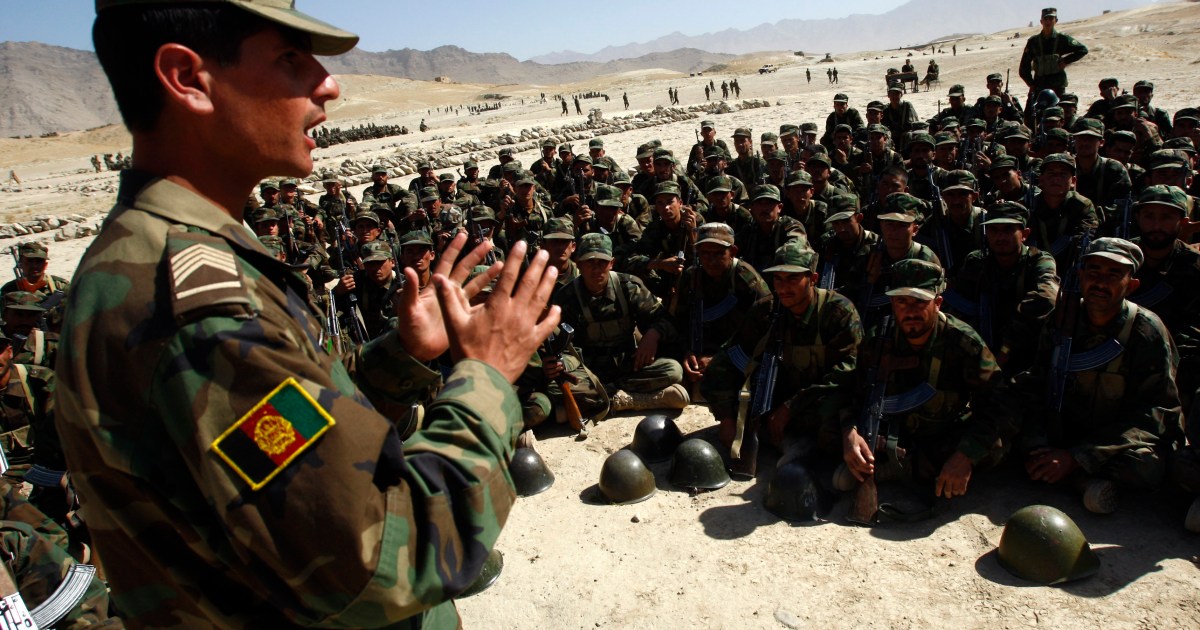US withdrawal prompted collapse of Afghan army: Report
The withdrawal of US forces and military contractors last year has been touted as “the single most important factor” in triggering the collapse of the Afghan National Defense and Security Forces (ANDSF), according to an interim report by the United States government’s leading oversight authority on Afghanistan reconstruction.
Washington has spent nearly $90bn on the Afghan army since 2002 in its efforts to fight the Taliban armed rebellion. The Taliban regime was toppled from power in a US-led invasion in 2001 in the wake of the 9/11 attacks.
The new report by the Special Inspector General for Afghanistan Reconstruction (SIGAR) points to decisions made by former US President Donald Trump and his successor Joe Biden as having precipitated the collapse of the Afghan army in August 2021 and the subsequent Taliban takeover.
The US-Taliban agreement signed by the Trump administration in February 2020, by which Washington agreed to withdraw military forces and contractors from Afghanistan, “set in motion a series of events crucial to understanding the ANDSF’s collapse”, the report said.
Following the deal, the US dramatically reduced the number of US air raids, leaving the ANDSF without a key advantage in keeping the Taliban at bay. This resulted in “a sense of abandonment within the ANDSF and the Afghan population”.
“Many Afghans thought the US-Taliban agreement was an act of bad faith and a signal that the US was handing over Afghanistan to the enemy as it rushed to exit the country,” SIGAR concluded.
Withdrawal of the contractors grounded the Afghan air force
Former US and Afghan military officials are quoted in the interim report saying the withdrawal of the contractors grounded the Afghan air force and sealed their fate.
“We built that [Afghan] army to run on contractor support. Without it, it can’t function,” one former US commander in Afghanistan told SIGAR.
“When the contractors pulled out, it was like we pulled all the sticks out of the Jenga pile and expected it to stay up.”
A former Afghan general told SIGAR that 60 percent of Black Hawk helicopters were grounded in a matter of months in the wake of the withdrawal of contractors, including those who provided maintenance work.
In March 2021, as the incoming Biden administration deliberated its Afghanistan policy, the Taliban threatened to resume attacks against US and NATO forces if they did not withdraw by May 1.
President Biden’s withdrawal announcement in April 2021 “destroyed ANDSF morale”, SIGAR found, as its officers had long relied on the US military’s presence to protect against large-scale losses and hold their government accountable for paying their salaries.
By August 15, 2021, when the Taliban reached the gates of the capital Kabul, six of the seven corps of the Afghan army had surrendered or dissolved.
“These US decisions had the additional impact of providing fuel for the Taliban propaganda machine. For ANDSF forces already physically isolated, facing supply shortages, and weathering aggressive Taliban propaganda efforts aimed at demoralising them, paranoia … exacerbated an already challenging environment,” SIGAR found.
The US Department of State declined to comment to SIGAR on the report, and the US Agency for International Development did not have any comments.
Factors that contributed to the ANDSF’s collapse
The oversight authority also identified multiple factors that explain why, after 20 years and nearly $90bn in US security assistance, the ANDSF was ill-prepared to sustain security following a US withdrawal.
Among them is an estimate of the length of the US time commitment that was “disconnected from the reality”; long-term dependencies such as the provision of advanced equipment that could not be sustained; the lack of metrics created to effectively measure ANDSF capabilities and Afghan government corruption.
SIGAR found the ANDSF to have remained reliant on the US military partly because the US designed the ANDSF as a mirror image of US forces. “The United States created a combined arms military structure that required a high degree of professional military sophistication and leadership,” the report said.
Because US troops were far more effective at fighting, they often led missions or filled critical gaps in missions at the expense of the ANDSF gaining experience fighting on its own.
Additionally, rather than developing a national security strategy and planning for nationwide security following the withdrawal of US forces, the government of former President Ashraf Ghani changed ANDSF leaders and appointed loyalists, marginalising well-trained ANDSF officers aligned with the US.
SIGAR said it had found the Taliban to be using US-provided military equipment, while some US-provided aircraft have been recovered and others remain in limbo in other countries.




